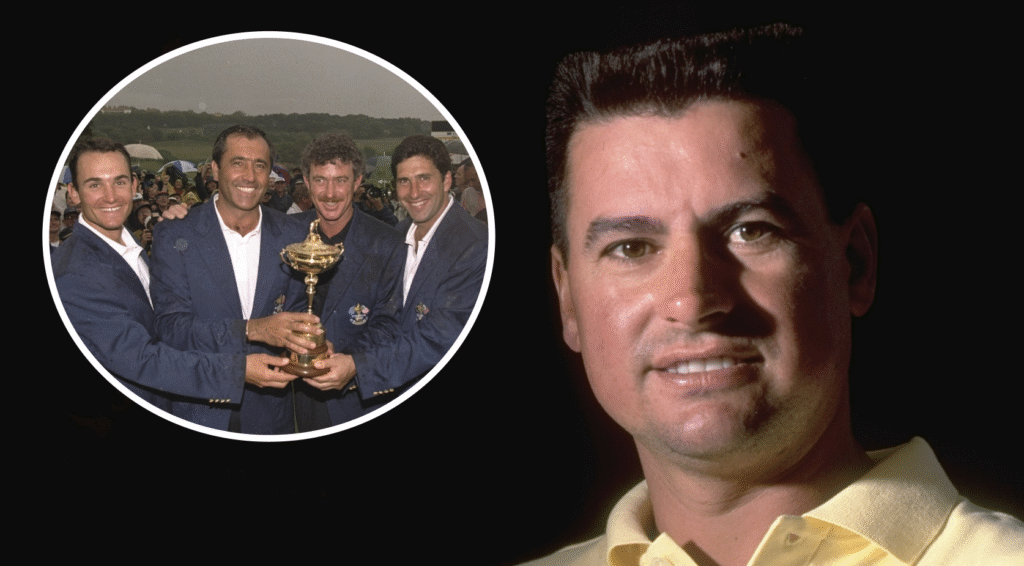The Infamous Miguel Angel Martin Ryder Cup Incident: A Deep Dive
The Ryder Cup, one of golf’s most prestigious tournaments, is no stranger to controversy. Since its inception, it has seen unforgettable moments both on and off the course. Among these, few incidents have caused as much friction and uproar as the events leading up to the 1997 Ryder Cup at Valderrama, particularly involving Spanish golfer Miguel Angel Martin. This article takes a comprehensive look at the build-up, the fallout, and the eventual impact of Martin’s exclusion from the European team.
A Promising Start for Miguel Angel Martin
Before the 1997 Ryder Cup, Miguel Angel Martin was on a promising trajectory in his golf career. He sat comfortably in the 10th position of the qualifying rankings for the Ryder Cup, with hopes high for making the European team. With only the top ten players securing automatic qualification, Martin was riding a wave of optimism as he prepared for the BMW International Open in Germany. A few standout performances had placed him in a favorable position, and in his eyes, a spot on the team was nearly guaranteed.
The Strand of Competition: Challenges from Rivals
However, the competition was fierce, and there were looming threats from fellow golfers like José María Olazábal and Padraig Harrington. Both were in contention to secure additional spots on the team but ultimately fell short in Germany. Martin believed that he had successfully navigated the treacherous waters of qualifying and only had to wait for an official announcement from captain Seve Ballesteros that would cement his place in the lineup.
The Shocking Ultimatum
But things took a dramatic turn following his missed cut at The Open Championship in July, primarily due to a wrist ligament injury that had sidelined him for six weeks. The news swiftly turned grim when Martin received a fax demanding that he prove his fitness by playing 18 holes at Valderrama the day after receiving the ultimatum. The Ryder Cup was a mere three weeks away, and with his health still a concern, Martin made the difficult decision not to comply with the request, believing that resting was paramount for his recovery.
Martin’s Exclusion: The Official Statement
A few days later, the Ryder Cup Committee confirmed what Martin feared: he would be replaced by José María Olazábal. The official statement outlined the reasoning behind the decision, emphasizing that Martin had been given an opportunity to demonstrate his fitness but refused to participate in the test. The announcement led to widespread media coverage, and Martin was both blindsided and incensed to learn of his exclusion through the press, threatening legal action against the committee.
The Firestorm of Reaction
The fallout was immediate. Martin expressed his outrage, describing the decision as "crazy" and vowed to fight it through legal channels. He still believed he could contribute to the team, especially given the unique circumstances of the Ryder Cup being held in Spain for the first time. His words were filled with frustration, directed not only at the committee but also at Ballesteros, whom he strongly implied had been behind his exclusion. The narrative was beginning to shape into a classic tale of rivalry and betrayal.
War of Words: Escalating Tensions
This public feud intensified when other players began weighing in. Ignacio Garrido, a rookie at that year’s Ryder Cup, voiced his support for Martin, criticizing the decision as "unfair" and suggesting bias against lesser-known players compared to bigger names like Ballesteros or Colin Montgomerie. His comments stirred the pot further and were met with condescension from Ballesteros, who downplayed Garrido’s input due to his lack of experience.
The Media Circus
As the drama unfolded, the media buzz reached a fever pitch. Martin even participated in team photographs ahead of the matches, appearing in team colors before being sent home just hours later. This surreal situation added another layer of complexity, showing how public perception can clash dramatically with internal team dynamics. It highlighted the emotional stakes for Martin, an athlete yearning to represent his country amidst a whirlwind of controversy.
The Fallout: The Story of the Tournament
Despite the internal conflicts, the European team moved forward. Jose Maria Olazabal stepped in for Martin and delivered a commendable performance, playing all five matches and scoring two-and-a-half points. The 1997 Ryder Cup eventually became a historic event, showcasing Europe’s first victory on continental soil, narrowly defeating the United States amidst the clamor of rivalries and unexpected drama.
Reflection on Fairness and Decisions
The incident surrounding Miguel Angel Martin serves as a cautionary tale within the high-stakes world of professional sports. It raises questions about decisions made under pressure and the impact they have on athlete careers, friendships, and team morale. Ballesteros, tasked with making difficult assessments, had to navigate a realm filled with emotional and professional landmines.
Final Thoughts: The Legacy of the 1997 Ryder Cup
In retrospect, the event is remembered not just for the competition but also as an embodiment of what can go wrong when personal relationships and professional aspirations collide. The Martin incident remains a vivid reminder that the Ryder Cup is not just about skill but also about the bonds that tie players together, the tensions that can tear them apart, and the resilience required to navigate such storms.
In conclusion, the 1997 Ryder Cup saga serves not only as a fascinating chapter in the history of golf but also as a powerful narrative about the vulnerabilities athletes face in their careers. As fans, we look forward to future tournaments while reflecting on the complexities that define this beloved game.


